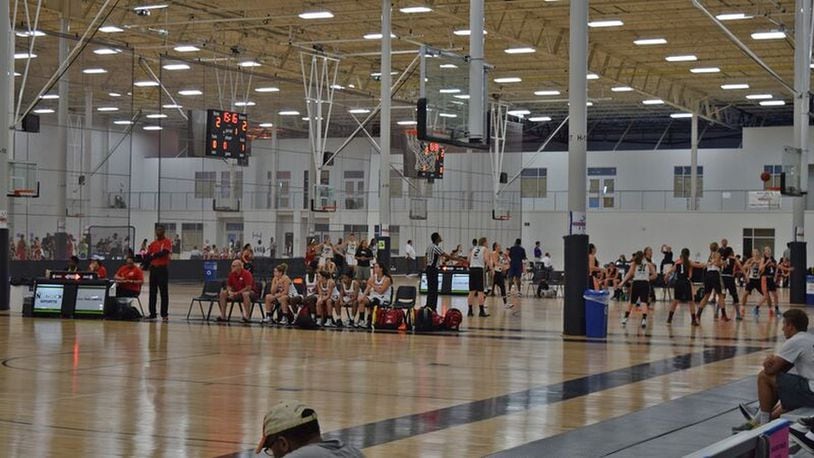It was built in a former warehouse space in a suburb of Lancaster, said Frances Mennone, the project manager for a group working to develop a similar massive sports complex along the Great Miami River in Hamilton.
Those efforts underway would convert the former Champion Paper mill property on the west side of North B Street into an indoor sports center with turf fields and ball courts, and outdoor multi-use stadium.
“We are moving along with our plans to have the financing put together by the end of the year and construction starting in 2016,” Mennone said.
The development team behind the Butler County project — consisting of Moses B. Glick, owner of the property under his company Green Reclamation LLC; local architect Mike Dingeldein of Community Design Alliance; community volunteer Jim Fitton; and Mennone, a board member of The Great Miami Rowing Center — traveled last week to Spooky Nook to see first-hand how that center works and was built, Mennone said.
It was the second time the local group visited the Pennsylvania complex. But this trip, they were joined by Messer Construction, which has been hired by the developers to come up with a construction estimate for the Hamilton project, Mennone said.
The space available under roof for the indoor center is approximately 500,000-square-feet, which would make the Hamilton center, if built, one of the largest in the country, Mennone said.
While the business plan is still being finalized, other indoor projects have cost in the range of $30 million to $40 million, she said. The next step is to obtain a construction estimate from Messer before asking for financing commitments from private and public sources.
The more sports that can use a facility, the more likely it is to be successful, she said.
“There really isn’t any venue like this space in southwest Ohio,” she said.
Similar to Spooky Nook, the Hamilton proposal would convert former industrial space into a new use. However, the Hamilton building is older, over 100 years old, she said.
“Nook books out hotel rooms within 60 miles when they hold events and they have 1 million visitors a year,” she said. “That’s the intention, to have it be a regional draw.”
Green Reclamation has also already hired two national consulting firms. Sports Facilities Advisory of Clearwater, Fla., studied the feasibility of the indoor sports complex portion, while Baltimore, Md.-based Sports Force looked into whether the region would handle a minor league-sized baseball stadium.
Renovations continue at The Great Miami Rowing Center at 330 North B St. — now managed by national firm RowAmerica — which is also part of plans to redevelop the former paper mill property, Mennone said. The rowing club has existed since 2007. In 2014, it opened a boathouse in the former SMART Papers/Champion Paper cogeneration station on the river.
The last step and final piece of redevelopment plans is to build a stadium with potential to become home for a minor league baseball team, the summer collegiate team the Hamilton Joes, Little League teams, and/or possibly a professional soccer league.
An era ended in Hamilton in 2012 when two paper mills, each with a history that dated back more than a century, closed within months of each other. First, Mohawk Fine Papers closed in January 2012 the Beckett Mill on Dayton Street. That was followed in March by SMART Papers, which wound down operations at the North B Street mill until the final shipping, cleaning and utility workers were let go. The SMART Papers site was previously the headquarters of Champion.
About the Author
